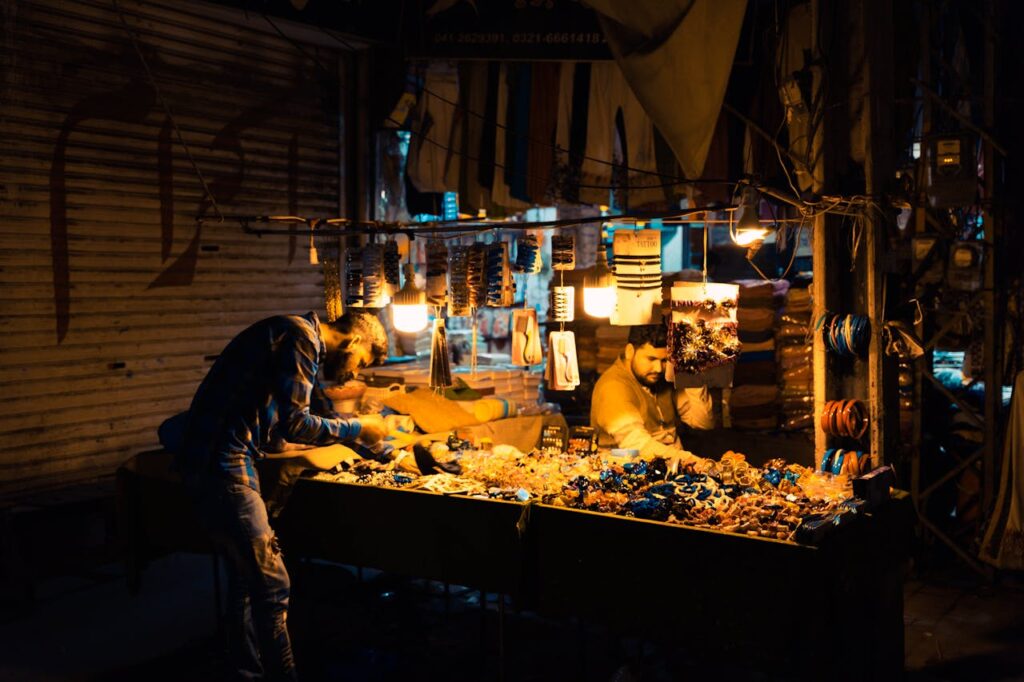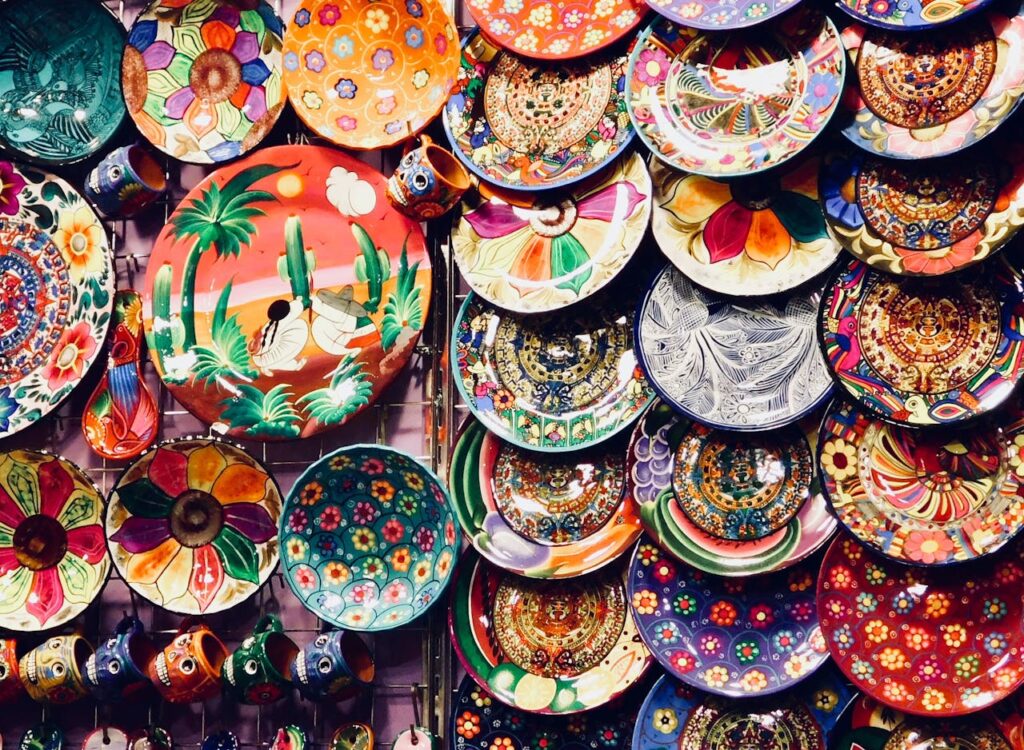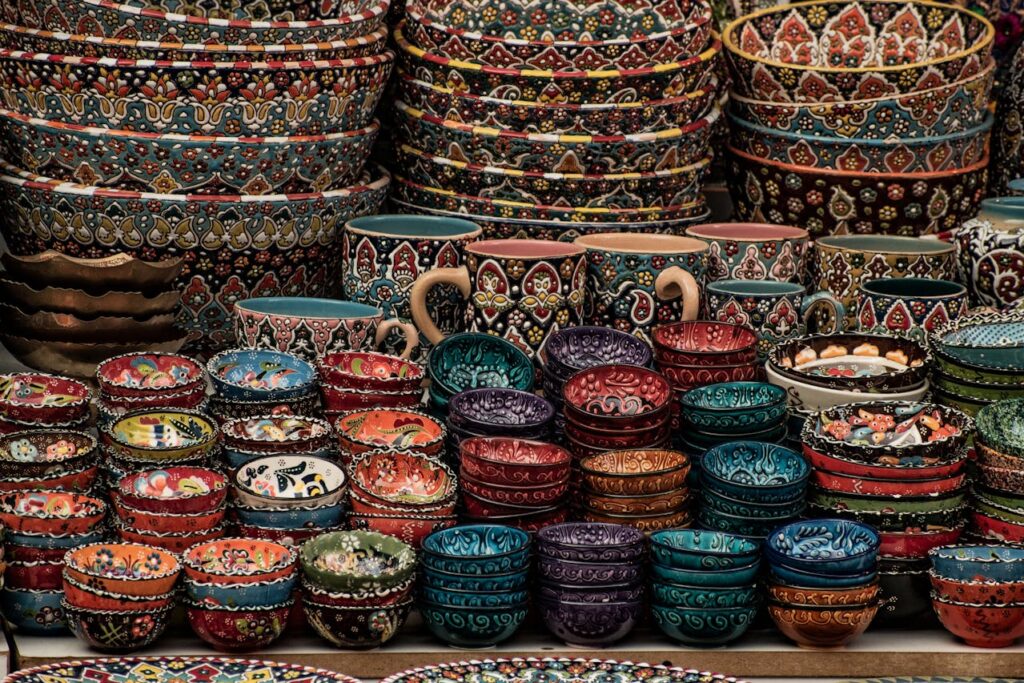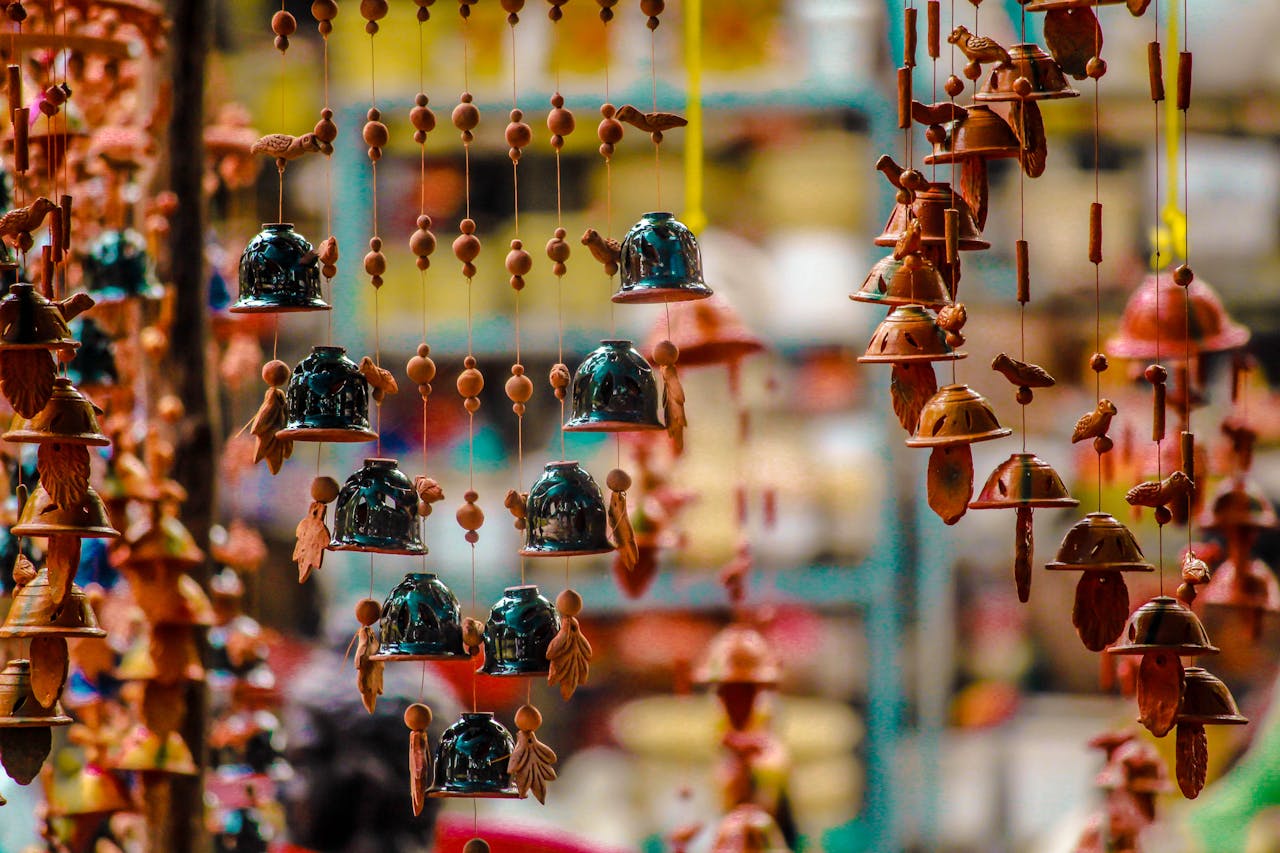Introduction
Ever wondered, how did artisans contribute to society? The answer goes far beyond just making beautiful objects. Artisans have played a vital role in shaping civilizations—economically, culturally, and socially—throughout history. From handwoven textiles and intricate woodwork to eco-conscious crafts in today’s sustainable tourism, their influence is far-reaching. In places like Pakistan, where traditional skills are passed down through generations, artisans continue to preserve heritage, support local economies, and offer meaningful experiences for eco-friendly travelers. In this post, we’ll explore how artisans have contributed to society across time, and why their role is more important than ever in our modern, sustainability-driven world.
Table of Contents
What is an Artisan?
An artisan is a skilled craftsperson who creates items by hand using traditional tools and techniques. Unlike factory-made products, artisan-made goods are typically unique, high-quality, and reflect the creativity and cultural heritage of the maker. These individuals often specialize in specific trades such as weaving, pottery, woodworking, metalworking, leather crafting, embroidery, or jewelry-making. Artisans rely on manual skills and passed-down knowledge, often learned through generations. Their work isn’t just about utility—it also tells stories, preserves local identity, and expresses artistic beauty. In many parts of Pakistan, especially in rural and mountainous areas, artisans continue to play a vital role in community life and local economies.

Whether it’s a handwoven Hunza wool shawl or a beautifully carved wooden bowl from Swat, artisan crafts reflect centuries of tradition—and support sustainable, small-scale economies that are good for both people and the planet.
Historical Contributions of Artisans
Artisans have played a pivotal role throughout history, shaping not just the economy of societies but also their culture, identity, and innovation. Long before industrialization, artisans were the backbone of communities—providing essential goods, services, and artistic expression that reflected the values and needs of their time.
Artisans in Ancient Civilizations
In ancient civilizations like Egypt, Mesopotamia, China, and the Indus Valley (modern-day Pakistan), artisans were responsible for creating:
- Tools and utensils for daily life
- Clothing and textiles using natural fibers
- Pottery and ceramics used for storage and rituals
- Architecture and sculpture that defined religious and political power
- Jewelry and decorative arts that symbolized status and tradition
These creations were not only functional but also deeply symbolic, often tied to religion, governance, and community storytelling.
The Role of Artisans in Islamic Golden Age
During the Islamic Golden Age (8th to 14th century), artisans flourished in regions like Persia, Turkey, and the Indian subcontinent. They were key contributors to:
- Calligraphy, mosaics, and intricate tile work in mosques and palaces
- Textile production, including handwoven carpets and embroidered garments
- Metal and glass work, including tools, ornaments, and scientific instruments

In cities like Multan and Lahore, artisans were deeply respected for their skills and innovation. Their crafts not only served local populations but were also exported across Asia, the Middle East, and Europe—contributing to global trade.
Artisans During Colonial and Pre-Modern Times
In the colonial era, artisans in South Asia—including Pakistan—faced new challenges. While their skills were in demand, colonial policies often favored mass production over traditional craftsmanship. Despite this, artisans:
- Continued to preserve cultural heritage through handmade crafts
- Provided economic independence to rural communities
- Played a quiet but powerful role in resisting cultural erasure by keeping traditions alive
A Bridge Between Generations
Historically, artisan skills were passed from generation to generation. In families, children learned techniques from elders, ensuring that valuable knowledge was preserved. This tradition-building is what allowed many artisan communities in Pakistan to survive for centuries, even in harsh economic and political times.
Economic Impact of Artisans Today
Artisans continue to play a vital economic role in today’s world, especially in developing countries like Pakistan. Despite the rise of industrial manufacturing, artisan-made products remain highly valued for their authenticity, craftsmanship, and cultural significance. This has led to new opportunities in local employment, tourism, exports, and sustainable development.
Supporting Local Economies
Artisan communities are often based in rural or remote areas where formal job opportunities are limited. Through their craft, artisans:
- Generate income for themselves and their families
- Create jobs for others in their villages—such as helpers, sellers, or apprentices
- Promote micro-enterprises and small-scale workshops
- Help reduce urban migration by providing work at the local level
Want to explore artisan villages in northern Pakistan? Book eco-lodges using Hotels.com or Expedia for reliable, sustainable stays.
Contributing to Sustainable Tourism
In eco-friendly travel destinations across Pakistan—like Hunza, Skardu, and Chitral—artisans are a key part of the sustainable tourism ecosystem. Tourists seek out handcrafted items that reflect the region’s culture and identity. This demand boosts artisan incomes and encourages cultural preservation.
Artisan contributions to eco-tourism include:
- Selling handmade crafts in local bazaars and guesthouses
- Conducting craft-making workshops for visitors
- Partnering with eco-lodges to provide authentic cultural experiences
- Creating souvenirs from locally sourced, sustainable materials
These interactions also educate tourists about traditional lifestyles and support low-impact, community-based travel.
Growth in Global Markets and Exports
Thanks to e-commerce platforms, artisans today can reach international buyers without needing to rely solely on local foot traffic. Websites like Etsy, Daraz, and even dedicated handicraft marketplaces allow artisans to:
- Sell their products globally without middlemen
- Earn higher profit margins for their work
- Access a larger audience that values ethical and handmade products
- Learn modern marketing and packaging skills through training programs
In Pakistan, initiatives by organizations like Hunar Foundation and the Indus Valley School of Art & Architecture have empowered artisans to tap into export markets, increasing their income and visibility.
Empowering Women and Marginalized Groups
Artisan work is especially empowering for women, minorities, and marginalized groups, who often face barriers in formal employment sectors. Through skills like weaving, embroidery, pottery, and jewelry-making, these individuals:
- Gain financial independence
- Work from home while managing household duties
- Pass on valuable skills to the next generation
- Strengthen their role in community leadership
In areas like Tharparkar and Gilgit-Baltistan, women-led cooperatives are successfully producing and selling handcrafted items locally and abroad—proving how artisan work can be a tool for inclusive growth.
Artisans and Cultural Preservation
Artisans play a critical role in preserving cultural heritage, especially in a rapidly modernizing world. Through their traditional skills, materials, and designs, they serve as living links to the past, keeping centuries-old techniques and stories alive for future generations.
To appreciate these traditions more deeply, carry a Handmade Travel Journal or join in with an Eco-Friendly Craft Kit while you travel.
Keeping Traditional Skills Alive
Many artisanal crafts—such as carpet weaving, pottery, embroidery, metalwork, and wood carving—have been passed down through generations. These skills are not just economic activities; they are a reflection of the identity, values, and artistic expression of a community.
By continuing to practice these crafts, artisans:
- Maintain unique local traditions that would otherwise be forgotten
- Serve as guardians of intangible heritage, such as folklore and symbolism
- Train apprentices to ensure the continuity of cultural knowledge
- Use native materials and methods that reflect the ecosystem and lifestyle of their region
In Pakistan, for example, the Ajrak block-printing tradition of Sindh and the Kalamkari embroidery of Balochistan are more than crafts—they are symbols of cultural pride.
Storytelling Through Craft
Every handmade product tells a story. Whether it’s the geometric patterns of a Hunza carpet or the floral motifs on Multani pottery, artisans incorporate local myths, beliefs, and historical events into their work. These crafts are not mass-produced—they are deeply personal and rooted in context.

Artisans act as cultural storytellers, helping to:
- Share local narratives, rituals, and values with younger generations
- Educate outsiders (like tourists or global buyers) about regional heritage
- Foster a sense of belonging and identity within communities
This storytelling dimension also makes artisan products more meaningful to consumers who seek authentic and ethical goods.
Revival of Forgotten Arts
In many parts of the world, globalization has led to the decline of traditional crafts. However, there is now a growing movement—especially within eco-conscious and heritage-focused travel—to revive endangered artisan practices.
Artisans are at the forefront of this revival by:
- Reintroducing neglected techniques with a modern twist
- Collaborating with designers and cultural institutions
- Participating in heritage festivals, exhibitions, and craft fairs
- Documenting their skills for educational use
For instance, in Pakistan, initiatives by Lok Virsa and various NGOs have helped revive dying crafts like camel-skin lamp making and Sindhi mirror work embroidery by giving artisans a platform to showcase their talent.
Building Cultural Pride
When artisans are supported and celebrated, it encourages communities to take pride in their cultural identity. This pride promotes social cohesion and helps prevent cultural homogenization. It also motivates younger generations to learn and continue these crafts rather than abandoning them for more modern professions.
Cultural preservation through artisanship helps:
- Maintain diversity in global culture
- Protect indigenous knowledge systems
- Foster intergenerational respect and learning
- Inspire creative innovation rooted in tradition
The Role of Artisans in Eco-Friendly Travel
Artisans play a vital role in promoting eco-friendly travel, especially in culturally rich and environmentally sensitive regions like Pakistan. As tourism shifts toward sustainability, travelers increasingly seek authentic, low-impact experiences—and artisan communities are at the heart of this transformation.
Promoting Sustainable Souvenirs
One of the most direct ways artisans contribute to eco-travel is by offering handmade, eco-conscious products as alternatives to mass-produced souvenirs. Unlike factory-made trinkets, artisan crafts are often:
- Made from locally sourced, natural, or recycled materials
- Produced in small batches, minimizing waste and emissions
- Designed to reflect the region’s culture and landscape
- Sold directly to consumers, reducing the carbon footprint of global shipping
Skip plastic! Use a Reusable Canvas Bag or Bamboo Cutlery Set while exploring local markets.
Offering Cultural Experiences with Minimal Footprint
Eco-friendly travel is not just about the environment—it’s about respectful cultural exchange. Artisan experiences such as craft workshops, weaving demonstrations, or pottery classes provide travelers with hands-on, educational activities that don’t harm the ecosystem.
These experiences:
- Encourage slow travel, reducing pressure on popular tourist hotspots
- Foster deeper connections between visitors and host communities
- Create memorable, ethical alternatives to resource-heavy attractions
- Often take place in homes or small studios, using minimal infrastructure
A traveler participating in a handloom weaving session in a Gilgit-Baltistan village learns about history, sustainability, and tradition—all while leaving a minimal footprint.
Preserving Natural Materials and Techniques
Many artisan crafts rely on sustainable natural resources—such as wool, clay, wood, or plant-based dyes. By continuing to use these materials and avoiding harmful chemicals or synthetic inputs, artisans help protect local ecosystems and inspire travelers to value natural alternatives.
Additionally, traditional methods like:
- Natural dyeing with herbs or stones
- Solar drying techniques for fruit or leather
- Hand tools over machinery
all reinforce a low-energy, low-waste philosophy that aligns perfectly with eco-tourism values.
Bridging Conservation and Creativity
Artisans are often closely connected to the land—they depend on it for materials, inspiration, and survival. As such, many artisan communities become natural allies in conservation efforts.
Eco-tourism initiatives now frequently partner with artisans to:
- Develop eco-themed art and storytelling projects
- Create signage, crafts, and textiles that raise awareness about endangered species or climate change
- Offer sustainable tourism certifications or training programs for artisan-led businesses
Travel lighter by shopping at Life Without Plastic or Eco Bravo UK for zero-waste essentials handmade with care.
Final Thoughts: Honoring the Past, Sustaining the Future
Artisans have long been the unsung heroes of society, shaping economies, preserving cultures, and expressing the human spirit through their crafts. From ancient civilizations to today’s eco-conscious world, their role remains as important as ever. In the context of eco-friendly travel—especially in countries like Pakistan—artisans are bridging tradition and sustainability, offering travelers a deeper, more meaningful connection to the places they visit. By supporting artisans, we do more than just buy beautiful handmade goods. We support local communities, protect cultural heritage, and encourage responsible tourism that respects both people and the planet. As travelers, choosing eco-friendly routes, staying in artisan-supported homestays, and purchasing locally crafted items can make a real difference—not just for your journey, but for the world.
Want to blog about your artisan experiences? Host your site sustainably with Reforest Hosting, which plants trees for every signup.
FAQ
Question1. How do artisans preserve traditional skills?
Answer. They pass down rare techniques like weaving, dyeing, and carving, keeping cultural heritage alive.
Question2. Are artisan products eco-friendly for tourists?
Answer. Yes, they’re often handmade using natural or recycled materials, making them sustainable souvenirs.
Question3. How do artisans support women in rural Pakistan?
Answer. Craftwork gives women income, independence, and a stronger role in their communities.




